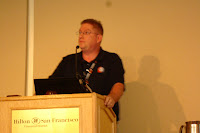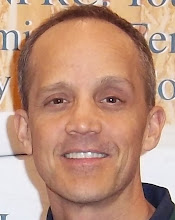 |
| Benney explains blind product rating verification pilot program |
Effective January 1, 2011, ENERGY STAR will require any product seeking program participation to have its energy performance validated by a third-party certification body prior to product labeling.
These products must also undergo post-market verification testing to validate continuing energy performance.
Benney pointed out that in accordance with this program, NFRC is developing a blind product rating verification pilot program. This program is important because it verifies that ENERGY STAR qualified and NFRC rated fenestration products sold in the marketplace are consistent with the products listed in the NFRC Certified Products Directory (CPD).
Benney emphasized his strong support for the blind product rating verification pilot program, saying it ultimately benefits the public. The program is slated to be implemented between the fall of 2011 and spring of 2012.
Under the blind product rating verification pilot program, individual fenestration products would be purchased annually by NFRC. The actual percentage of products NFRC would purchase would fluctuate as determined appropriate by NFRC and the EPA.
Such purchases would be conducted with no involvement from the manufacturer and would be facilitated by purchasing through a variety of agents or contractors, purchasing through the customers of a manufacturer, and/or by purchasing directly from a distributor or retailer.
Benney closed his presentation by acknowledging that the program faces certain challenges and also reaffirming NFRC's commitment to meeting those challenges. Benney also told the audience that NFRC staff would keep them well informed of developments as they arise.




